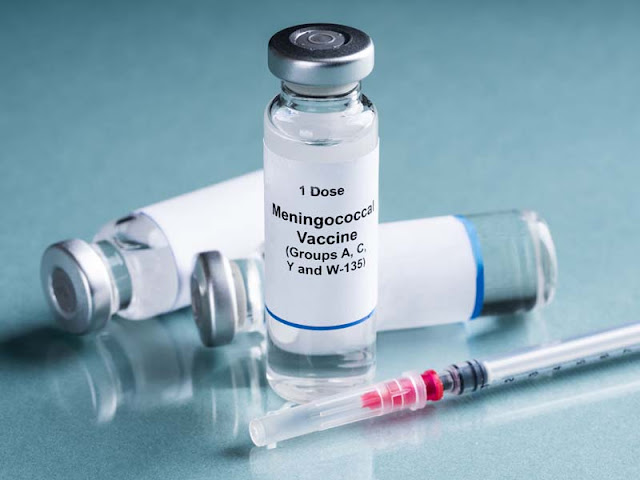DNA Extraction Kits: A Beginner's Guide to Extracting DNA at Home
 |
| DNA Extraction Kits |
DNA extraction kits have become
ubiquitous in laboratories and at-home genetic testing. These kits provide an
easy and reliable way to isolate DNA from various biological samples for a wide
range of applications. As genetic testing becomes more commonplace, let's take
a deeper look at DNA extraction kits - what they are, how they work, and their
importance.
What are DNA Extraction Kits?
DNA extraction kits are
collections of reagents and consumables designed to extract and purify genomic
DNA from cells and tissues. At their simplest, DNA extraction kits allow users
to lyse or rupture cells, digest proteins and RNA molecules, and separate DNA
from other cellular components through centrifugation or filtration. This
leaves behind clean, usable DNA that is ready for analysis via polymerase chain
reaction (PCR), genome sequencing, genetic profiling, or other downstream
applications.
DNA extraction kits come
pre-packaged with buffers, solvents, and other components tailored for specific
sample types like whole blood, saliva, buccal swabs, tissue biopsies, and more.
Popular commercial kits include swab-based collections for mail-in genetic
testing as well as larger laboratory-scale extractions. Kits vary in complexity
from manual preparations to automated liquid-handling workstations. No matter
the format, DNA extraction kits provide a standardized, easy-to-use system for
DNA purification.
How do DNA Extraction Kits Work?
The DNA extraction process
involves several key steps:
Lysis: Cells and tissues are
lysed or ruptured using detergents to disrupt cellular and nuclear membranes.
This releases the contents of the cell, including genomic DNA.
Protein Digestion: Protease
enzymes are added to digest unwanted proteins which could interfere with later
steps.
Precipitation: DNA precipitates
out of solution while other molecules like cell debris remain suspended.
Ethanol or a salt solution is typically used.
Washing: Contaminants are washed
away through centrifugation or filtration, leaving purified, high-molecular-weight
DNA.
Elution: Finally, clean DNA is
eluted or collected in a low-salt buffer solution, ready for analysis or
storage.
DNA extraction kits automate and
streamline these steps into easy-to-follow protocols. Buffers are optimized to
work synergistically and leave behind DNA that is properly purified with high
yields, purity, and integrity. Filters or spin columns allow hands-free
isolation while minimizing sample handling and contamination risks.
Key Applications of DNA
Extraction Kits
Thanks to their ease-of-use and
high-quality results, DNA extraction kits are now employed in various
scientific, medical, and consumer applications:
- Genomic and genetic research:
Purifying DNA from clinical samples, cell lines, and model organisms is crucial
for sequencing, genetic mapping, epigenetics, and more.
- Forensic analysis: DNA matching
for criminal investigations relies on clean, intact DNA extracted from trace
evidence like blood, semen, and hair follicles.
- Medical diagnostics: Detecting
genetic variants linked to diseases, determining ancestry compositions, and
monitoring transplants require DNA extractions.
- Paternity testing: Home kits
and clinical services extract paternal DNA from cheek swabs to establish
biological parentage with high accuracy.
- Genealogy: Companies like
AncestryDNA and 23andMe provide at-home DNA collection kits for building family
trees and tracing ancestral origins.
- Microbiome analysis:
Characterizing the microbial communities living within and on our bodies starts
with extracting DNA from stool, urine, skin, and more.
With versatile applications
across industries, DNA
extraction kits have become essential laboratory tools and enabled new
consumer genetic services. Their standardized methods make genetic analysis
more approachable and reproducible for both research and personal use.
DNA Extraction Process Validation
and Quality Control
Given DNA's importance as a
molecular fingerprint and source of information, the integrity of extracted DNA
is paramount. Proper validation of DNA extraction methods is necessary to
ensure:
- High yields: Adequate amounts
of DNA are reproducibly isolated from samples.
- Purity: DNA is free from
contaminants that could interfere with downstream analysis.
- Integrity: DNA remains intact
with little to no fragmentation.
- Consistency: Validated
protocols generate comparable DNA quality across samples, extractions, and
users.
Regular quality control measures
help guarantee continued performance. Metrics like DNA concentration, purity
ratio (A260/A280), fragment size distribution, and PCR amplification are
commonly assessed. Certification under standards like CLIA, ISO, and Good
Laboratory Practice guidelines gives further assurance to end users. Automated
extraction platforms also digitally track each run for documentation and
regulatory compliance.
As genetic applications
proliferate, validation and quality oversight become ever more essential to
support DNA extraction kit performance claims and data integrity. This
strengthens consumer and physician confidence in the services utilizing
purified genomic DNA.
Future of DNA Extraction
Going forward, DNA extraction
technology will continue innovating to:
- accommodate rarer and
lower-quality sample types like ancient and degraded DNA
- increase DNA yields from
limited inputs through improved lysis and binding methods
- accelerate processing times on
automated workstations and microfluidic chips for high-throughput applications
- miniaturize extractions outside
the laboratory through microsampling and paper-based devices
- integrate fully with
next-generation sequencing workflows in renewable, sustainable formats
As the role of genomics expands
across industries, the demand will grow for rapid, sensitive, affordable, and
easy DNA extraction solutions. Future kits may require less hands-on time, work
with trace inputs, and directly prepare DNA for sequencing - furthering genetic
analysis opportunities. Overall, DNA extraction kits remain a fundamental
sample preparation tool advancing scientific discovery and transforming
personalized healthcare.
Get More Insights Here



Comments
Post a Comment